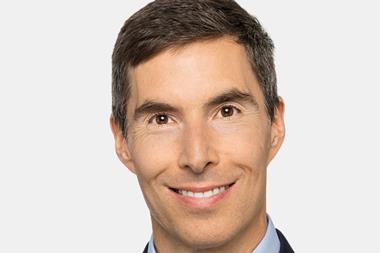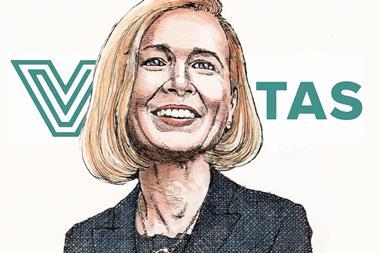Martin Steward argues that it might be best to judge hedge funds' diversification benefits by their optionality, as opposed to the conventional risk/return metrics.
PGGM's head of hedge funds, Jan Soerensen, said something interesting to me recently. When the board looks at hedge funds, he suggested, they see something quite different from what he sees. First, they compare the expected returns from hedge funds over the next 3-5 years with what they expect to get from other investments; and then they compare the costs.
From that perspective, hedge funds don't look very attractive. The HFRI Fund-Weighted Composite index finished 2011 down 5.25%, while the S&P 500 index finished up 2.09%. For the year to September, the hedge fund index is up 4.65% versus the S&P 500's 16.43%. Take the three-year post-crisis period from January 2009 to the end of 2011 and compare hedge funds against a traditional-looking balanced portfolio – 62% global all-caps equity, 28% nominal and inflation-linked sovereign and corporate bonds, 5% real estate and 5% cash – and that doesn't make much of a case, either: the balanced portfolio is up 38% (11.4% annualised), while the hedge funds are up just 25% (7.8% annualised).
"If you ask me, it's a different question," said Soerensen. "There is a lot of value in having these strategies as diversifiers."
The board might question that, as well. Swap 15% of that balanced portfolio for hedge funds and rebalance at the end of each year and, since January 2009, you'd have reduced the return (to 36%) and improved your Sharpe ratio from just 0.76 to 0.80. Volatility has come down, but is it really enough to compensate for the loss of return?
However, is that what Soerensen really means by 'diversification'? The crisis revealed that volatility and Sharpe ratios tell us very little about hedge fund risk – which is often about what happens in the tails. Therefore, we should think about hedge funds' diversifying properties in terms of the optionality they can give investors when big buying opportunities open up across asset markets.
That means three things: first, we have to consider periods that include big market moves like 2008-09; second, we have to focus on particular hedge fund strategies – not 'hedge funds' per se; and third, when we do all of this, the fact these strategies might deliver very low or even zero returns over quite a long time becomes a secondary issue.
To illustrate the point, think about the cash you have in your portfolio. It makes no sense to hold cash as a strategic asset: from the start of the century to the end of 2011, it only returned 38% (2.7% annualised) – and most of that came in the early years when rates were still relatively high. Cash isn't valued for its return, but for its optionality.
Let's swap 15% of the balanced portfolio for cash, rebalance each January and add 15 percentage points to the cash holding if the balanced portfolio rises by more than 25% over a calendar year or reduce cash by 15 percentage points if it falls more than 25%. The results for 2000-11 are interesting. Cash goes to 30% at the end of 2003, gets re-invested at the end of 2008, and then goes back to 15% a year later. The annualised return is 4.1%, 17 basis points more than the balanced portfolio alone (with 195bps' less volatility) and 11bps more than a constant 85/15 balanced/cash portfolio (rebalanced each January).
Unlike cash, hedge funds were a good standalone investment between 2000 and 2011 – the HFRI index returned 95% (5.7% annualised) versus our balanced portfolio's 59% (3.9% annualised).
But that's because they mix (long-volatility) optionality with (short-volatility) market risk that pays a premium. That market risk explains why, if you replace cash with hedge funds in the investment strategy in the previous paragraph, you only add 7bps of annualised return (getting 4.18%) – and you lower your Sharpe ratio in the process (from 0.37 to 0.34). If we want hedge funds as a diversifier and we think of diversification as optionality, then we need to choose hedge funds that are long volatility.
To get a sense of the power of that approach, consider a simple combination of 85% balanced portfolio with 15% in options replicating the VIX index, rebalanced each January, without any fancy trading. For 2000-11, this returned 72% (4.6% annualised) with a better Sharpe ratio (0.39) than either the balanced-plus-cash or the balanced-plus diversified hedge funds portfolio. (Incidentally, the best mix, returning 75.4%, had 27% in the VIX options). And the return from the VIX alone? Unsurprisingly, given that volatility mean-reverts, it was almost precisely 0%.
Here are my conclusions from all of this. Hedge funds as a broad group are a perfectly good (but expensive) way to allocate capital. Some of what they do you can get with a conventional balanced portfolio, so, in a standalone context, it may or may not be worth paying hedge fund fees for those risks that you can get from conventional assets. In a portfolio context – a 15% allocation, say – they don't appear to move the needle much in terms of either performance or diversification.
But in that portfolio context, the optionality you can isolate from certain strategies (like volatility-trading, managed futures and global macro) certainly is worth paying for. To recognise that value, however, you need to get over your fear of holding something with low – or even zero – expected returns. Remember – it's the unexpected returns that really count.


















No comments yet